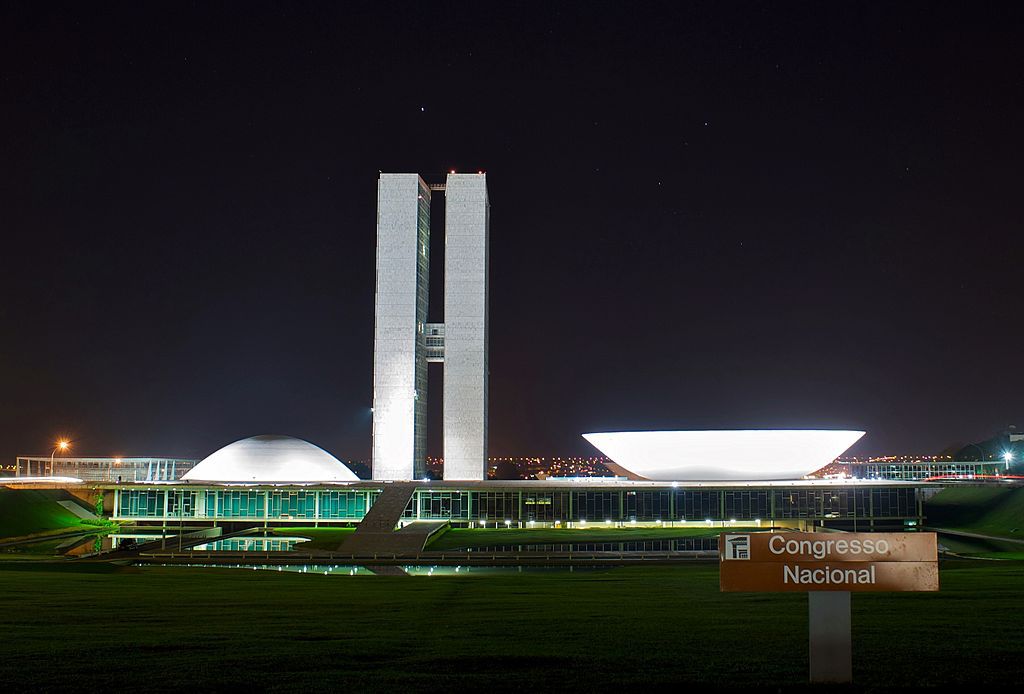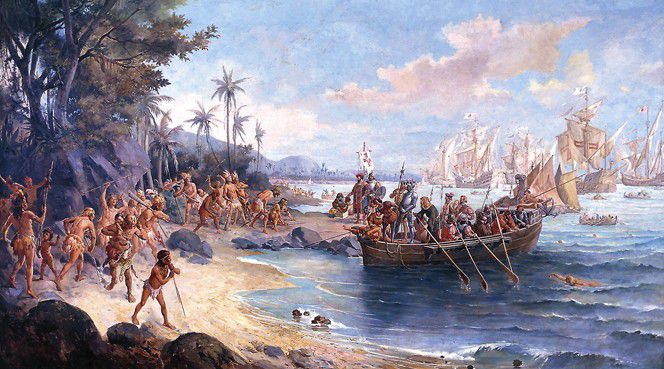
Porto Seguro/Salvador July 12 — July 17
July 12 Thirteen hour overnight bus ride, Salvador to Porto Seguro.
July 13 Nothing on earth could make me believe this could be true: Here, in Porto Seguro, meet Iva Lee Hartman ex West Virginia, ex-Bryanston/ Three Vikings/ Bryanston Country Club/ Ciro's/ Diamond Horseshoe (all in Johannesburg) Now living in Porto Seguro like a decadent aristocrat as owner of “Campo Gringo” resort and “Engenho do Duque.” From three to nine p.m. spent in company of this real-life "Madame Hortense"(Zorba). A lovely/ sad/ lonely/ exotic figure, as memorable as anything yet seen in Brazil!
Am working on Porto Seguro contacts. Senhor Benedito, “town crier” promises meeting early hour tomorrow. As I write I realize that I have not slept since 8.00 a.m. Sunday 12th; now 10 p.m. Monday 13th = 38 hours. Good night!
July 14 Curious thing about Porto Seguro is that though this is where Cabral landed, scene of the “discovery” of Brazil, there is little to mark so momentous an event for the people of Brazil. There is a Cross, several in fact, at the alleged landing spot - stark, little adorned, no more. A decadent Indian village - Patachos - around the Cross, selling necklaces, feathered arrows etc. Craig Hartman tells me some local townsfolk wanted village moved. I wonder whether they saw irony of the Cross and the ruined people at its feet. The Cross as symbol of the advent of the Portuguese/ the curio-sellers in favelas as symbolic of what the Indians who welcomed Cabral inherited.
Sixteen kilometers away from Porto Seguro to the south is Cabrália Santa Cruz, which claims to be site of first landing. Who is correct? I'm told by Antonietta that accepted historical view is Cabralia, not Porto Seguro. Which must irritate the hell out of its people, for it's truly depressed compared with Porto Seguro. Cabrália also seems far more noted for relics of an ill-fated French vessel which foundered on its reef. Its “restaurant” decorated with the ship's hawsers, ventilators, life belts etc.
Can hardly imagine reaction of the Portuguese who landed here. The magnificent beaches, the groves of palm trees, the hills in the background leaning toward the shore, their heights offering special defensive positions.

I'm increasingly impressed with outgoing friendship of the Brazilian people. Group at supper watched me eating alone and invited me over. Two couples from São Paulo, who afterwards asked if I would like to go for a walk. They share their spontaneous enthusiasm for Brazil and the future of their country - We talk of African/ Indian folklore, its fundamental force behind Brazilian culture.
July 17(Back in Salvador) I'm somewhat amused after all my worry about visas etc. that Antonietta says I'm fortunate having a South African background. Brazilians do care but know little of apartheid. Show that you do not support that insanity and they're likely to be far more receptive to you than they would be to a North American. Antonietta is, of course, first major contact and there'll be other opinions, but she speaks of underlying resentment toward the United States, its multinationals, its prejudice toward Brazil.
I've been here ten days and my sense of identification with the Brazilian people grows. They're vibrant, friendly, energetic - a nation imbued with the pioneer spirit. They have a vision that theirs is a nation going places, though the direction is not always clear.
The contrasts between rich and poor, old and new, were initially staggering to me and remain so. But even among the poor, there seems no utter wretchedness: even they have a sense of the potential of Brazil, and thus, hope.
I see this hope in a small self-help program at Porto Seguro and Cabrália: the townspeople have tackled the problem of the abandonados by giving the youngsters jobs as tourist guides. They're taught to lead visitors through the old parts of town. Twenty years down the road, I'11 lay a bet, one of them could be running his own tour operation.
Brasília, July 18 — July 22
Curious that I should move from the start of my book to the end - from the shores where the Portuguese landed to the Brazil of tomorrow. The impact is a sensual shock - from vibrant, dynamic, historical Salvador to this futuristic fantasia. Impressions rush at you. This is not Brazil? An attempt to outdo the U.S.A.? It doesn't represent natural outgrowth or mobility of traditional Brazilian society? Orwell's 1984? Kubrick's 2001? A giant leap of faith? Indication of a future Brazil, its spirit homogenized, sanitized?
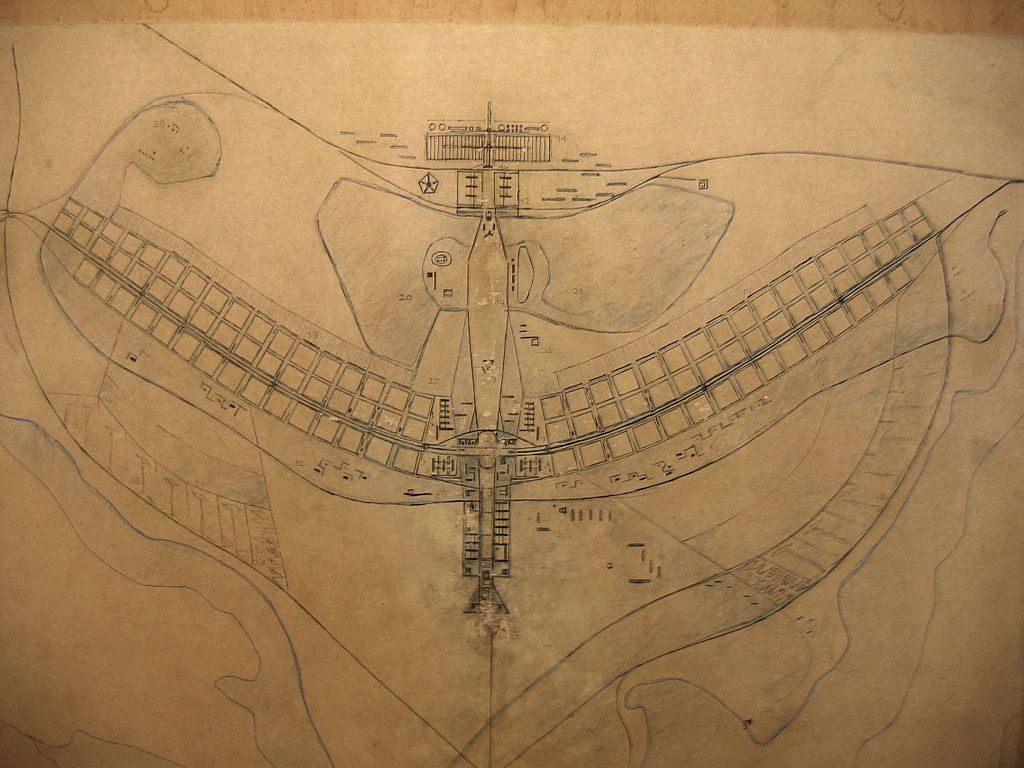
First “experience” was seeking house of Ambassador Vladimir Murtinho. City is divided/sub-divided/sub-sub divided into quadrants, nothing so messy as telling, colorful street names. You live in Quad X, Block Y, House Z. Planned, no doubt, for easy reference. To my amusement,we are unable to find the house. It's in the Ambassador's Quadrant, No 6. House numbers go 9, 12, 6 ???
Marie Eugenie who is driving me around tells of serious social problems of Brasília. High suicide rate, high divorce rate. She has been here three years (from London; husband a banker) and finds the city with the widest open spaces of any to be claustrophobic. Living in this isolated spot in mid-South America with thousands of “functionarios,” government officials. “Two and a half hours' driving to the nearest proper town,” she says!
A modern-day colonization scheme with first-generation immigrants from other parts of Brazil setting up here and having all problems of first generation in a foreign country. Though these arrivals from Rio etc. find it difficult, Marie Eugenie says their children love Brasília. In a generation or two it will have people knowing no other place, no other life style and they will give it spirit.
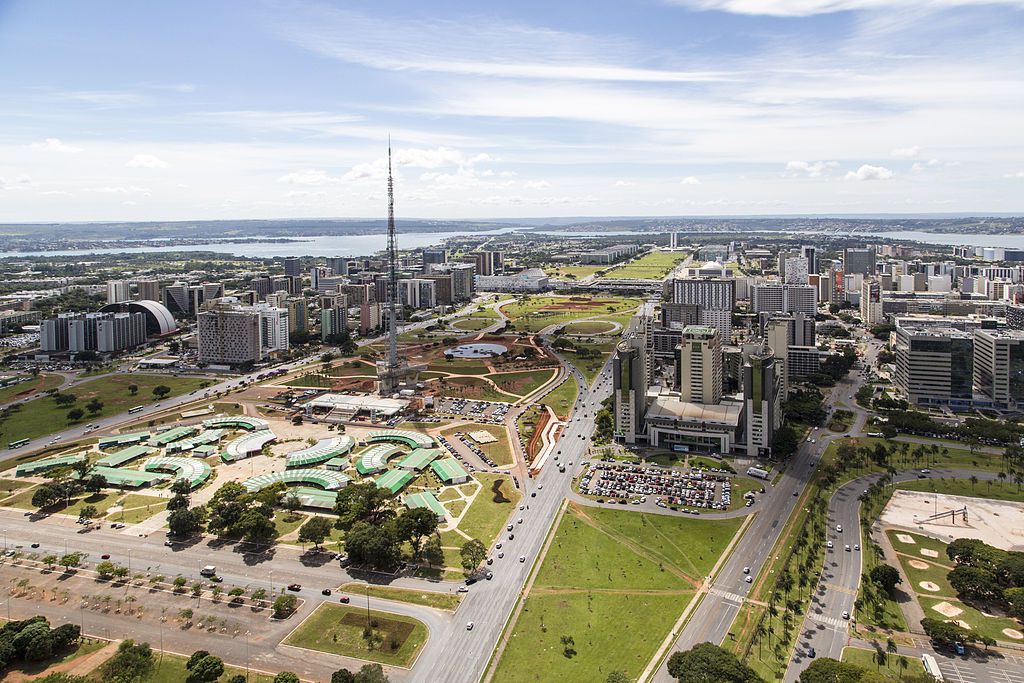
Yesterday, first work day in Brasília once again showed tremendous response to ELU and Brazil. Dr. Aloisio Magalhães (Secretary of Culture) provided a great reception via members of the Madeira-Mamoré project. After morning with them, Marie Eugenie (Magalhães's secretary) took me over to Ambassador Murtinho at the foreign office. The ambassador took me to his house for lunch; then back to the Culture office for audio-visual show on the Madeira-Mamoré railroad and finally, a two-hour discussion on contemporary politics.
With very little overt evidence of a military dictatorship, I'm still surprised by freedom with which people talk. Rogerio, without a word of English, (helped by translator) bared his soul saying much the same as Antonietta.
Some of his comments: Before 1964 there was a genuine movement toward agrarian reform; since then the situation has regressed with people in the North-East worse off/ problems of latifundists/ monoculture as serious as ever, and aggravated by multinationals/ mechanization /migration patterns both urban and rural. Even in areas like Rondônia/ Amazonas where development of road infrastructure was supposed to open opportunities for the impoverished from the North-East, the “escape valve,” country-style favelas develop and poverty continues.
Rogerio, Marco and Isabel show strong antagonism toward multinationals: see exploitation of Brazil's raw materials; delaying of Brazilian solutions to Brazilian problems; impoverishment of the people. What jobs and prosperity multinationals are supposed to have created are offset by destruction of small industries, small farmers often forced out of business/ off land.
Roberto, Marco and Isabel represent late 20s to mid-30s group and seem inclined toward some form of socialism, wealth sharing as solution. They're very aware of 60 per cent “dispossessed” factor, under and un-employment etc. They themselves belong to the other 40 percent — Size of Isabel's gold bracelet indicates even higher percentage? — but reflect different social consciousness from their mothers and fathers. Though all are “functionarios,” they evidence little support for the regime.
They see Church as major liberating force. At time of Pope's visit, in prep stages, there were two groups, conservatives and liberals jockeying to arrange schedule. Comprise solution: On his visit to different parts of country, Pope used differing approaches depending on whether liberal/ conservative state. Spoke against priests involvement in organized politics but not against social role for priests. Various interpretations placed on what he said.
Liberal group in church hierarchy exerting influence far beyond its size and forcing conservatives to take action. At village/ local level priests involved with people fighting for land rights. Ironically one of largest latifundia in Rondônia has major shareholder = Vatican.
Rogerio says Pope went out of his way to visit poor of Brazil. Spent barely one day in Brasília which he did not like.
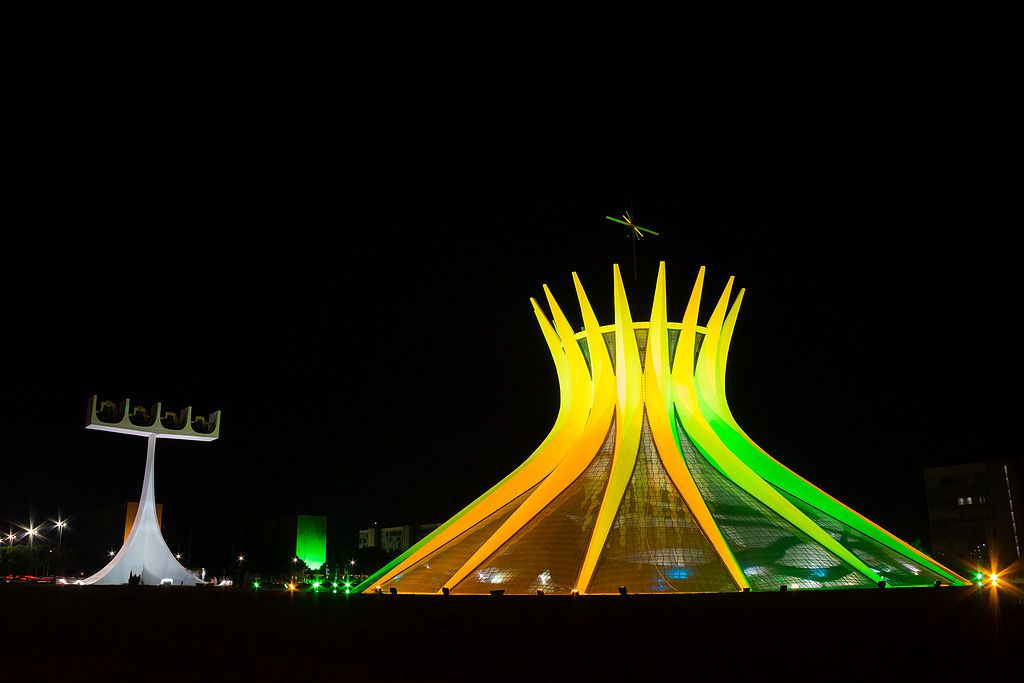
Asked if the three of them were typical of their generation, Rogerio said no. Most were still more conservative and seeking way to top via engineering and science rather than intellectual pursuits.
Striking contrast to these three is the home/ background of Ambassador Murtinho. — My “da Silva” family at their finest! - Magnificent home on shore of Brasília's artificial lake built to change excessively dry climate. Two visiting artists at pool party and brother who is Brazilian ambassador to Ecuador. (“Yes the people are poor, but it's because they're lazy. They don't care about improving themselves.”)
Vladimir has been involved with Brasília since its foundation, an ardent supporter of the concept, believes that it represented a turning point in Brazilian history. Provided nation with move/ incentive/ drive toward modernization of Brazil - from this massive symbolic act everything else has flowed. (Good point, but need to have his opinion on millions left behind by modernization.)
Most “human” thing seen in center of Brasília is - a ratazana running in the street, here amid this grand design! How it survived in this place is amazing. Evening with Swiss couple at shopping center where we eat could be in Connecticut, U.S.A. Pathetic little scene of couple trying to be Brazilian a la Bahiana, spontaneously dancing to car radio music in parking lot.
Think I've mastered the way of working here: the 24-36 hour “introductory” process before acceptance “in.” My burgeoning list of contacts who genuinely want to help is such that I'll soon have too many to handle. They're amazed that anyone could attempt so vast a project. “No Brazilian would dare.” - They probably think I'm either a genius or a madman. A little of both? As has been case since arriving, my optimism continues to grow.
1 a.m. A church bell from the space-age Cathedral, sounding clear amid this glass-concrete miracle.
